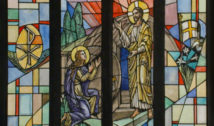
Festival of Durga Is A Victory of Good Over Evil
- By Nathan Glover --
- 14 Oct 2015 --
![By Dipankan001 (Own work) [CC BY 3.0], via Wikimedia Commons](http://www.worldreligionnews.com/wp-content/uploads/2015/10/1024px-Durga_Puja_celebration.jpg)
Hindus prepare to celebrate the great goddess Durga.
The Festival of Durga which is also commonly referred to as Sharadotsav is an annual Hindu celebration that occurs in South Asia celebrating the worship of the Hindu Goddess known as Durga.
It takes place over the course of six days, with each day having a special name. This Festival of Durga Puja is celebrated from the sixth to the tenth day of bright lunar fortnight (also known as Shukla Paksha) during the Hindu calendar month of Ashvin. It falls within the fortnight which corresponds with the Festival of Devi Paksha or the “Fortnight of the Goddess.”
The festival occurs from October 12 to 22 this year.
In Sanskrit, Durga translates to “she who is incomprehensible or difficult to reach.” The Goddess Durga is a form of Shakti who is worshipped for her graciousness just as much as her terror. Representing the “Mother of the Universe,” she signifies the infinite power of the cosmos and symbolizes female dynamism. Her manifestation is believed to emerge from a formless essence as the two are inseparable. Though she is known by a vast array of other titles including Parvati, Ambika and Kali, each of these labels maintains slight variations.
Festival of Durga: Victory of Good Over Evil[/tweetthis]
There are some essential items required for each day of the Durga Puja along with intricately detailed methods of worshipping the Goddess Durga which are all mentioned within the scriptures. All items necessary for the ritual reverence of this Goddess must be obtained prior to the festival so as to perform the mandated ceremonial worship as smoothly as possible. Though the list is quite extensive, some of the fundamental items include food offerings such as grains, curd, honey and much more as well as water offerings and certain specified Puja items like leaves and powders.
I am here in Kolkata – the City of Joy – to mark the arrival of the Durga Puja festival, reuniting with old friends and making new ones.
— Pelé (@Pele) October 13, 2015
The origins of this celebration go back for centuries. As the festival has been held since the middle ages, there have been extensive evolutions in the celebration adapting to the ever changing world. In its earliest forms, there exists immense quantities of literature regarding the Durga in the Bengali language. In its earliest forms, the Goddess Durga was not fully integrated into the Hindu pantheon until around the 16th century. Additionally, the early Durga festivals were primarily meant for private worship within residential locations through the utilization of musical instruments such as the Mridanga, Mandira and Samakhya.
These days, the Durga Puja begins with the Mahishasuramardini which is a two hour radio program having been a popular tradition since the 1950s. The Bengalis will typically rise at 4 am on Mahalaya day (the first day of the festival) and tune into to hear voices of the late Birendra Krishna Bhadra and the late Pankaj Kumar Mullick on All India Radio while they recite both hymns and scriptures from the Devi Mahatmyam. Popularly believed, Devi arrives and departs in an unknown form of transport which will predict the lives of people for the upcoming year.
This annual visit by the Goddess with Her children is commemorative of the immersion of the sculptures of Dashami and is a festivity of the triumph of Good over evil as well as the worship of the power of Good and its persistent victory over the bad or negative aspects of the universe.
#Mahalaya tomorrow! Ah the #DurgaPuja feels?? I can listen to the sound of dhak all day long☺️?
— Aishwarza L Pandit (@Aishwarza1) October 11, 2015



















